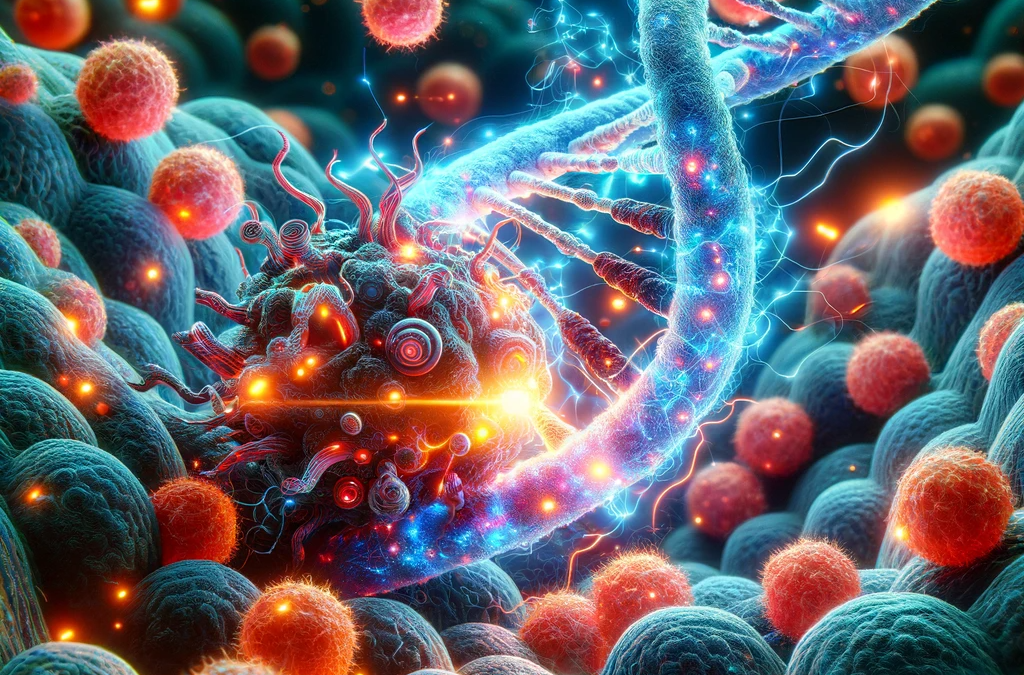Researchers from the University of Tokyo recently made a discovery that they believe could be a breakthrough in the fight against cancer. The researchers tested artificial DNA as a weapon for targeting and destroying cancer cells, and the results were encouraging. The team of scientists hopes that this new approach could lead to new treatments and improved outcomes for patients. Here is a closer look at this study and what may come next.
Background of the Artificial DNA Study
The study was conducted by a team of University of Tokyo researchers led by Assistant Professor Kunihiko Morihiro and Professor Akimitsu Okamoto from the Graduate School of Engineering. The team sought to create a new anticancer drug using artificial DNA. The group posited that creating a new drug that works using different mechanisms than conventional drugs could be a path toward treating currently terminal cancers.
Other researchers have explored the use of nucleic acids (like DNA and RNA) in cancer treatment. While some of these results have been promising, significant hurdles remain. The main challenge has been finding a way to allow the nucleic acids to differentiate between cancer cells and healthy cells. The patient’s entire immune system is at risk if the acids attack healthy cells. However, the Japanese team may have found a way to circumvent this difficulty. It developed a hairpin-shaped strand of DNA capable of activating a natural immune response that targets and kills cancer cells—and only cancer cells.
Development of the Artificial DNA Cancer Drug
Cancer cells often make too many copies of certain molecules of DNA or RNA, in a process known as overexpression. This can cause abnormal functioning in these nucleic acids. The research team created artificial cancer-killing hairpin DNA pairs called oHPs. These were triggered to produce longer DNA strands when they encountered an RNA stranded called miR-21, which is overexpressed in some types of cancer.
Normally, oHPs do not form longer strands because of their curved hairpin shape. But when the artificial oHPs enter cells and encounter the target miR-21, they combine with it to form a longer strand. This process triggers the immune system to recognize that the overexpressed miR-21 is hazardous. This immune response eventually kills the cancer cells.
Testing the Artificial DNA Drug
The team tested the artificial DNA drug in human cervical cancer-derived cells, human triple-negative breast cancer-derived cells, and mouse malignant melanoma-derived cells. It was effective against all three types of cell. This approach not only eliminated existing cancer cells, but it also prevented cancerous growth.
This formation of long DNA strands from the interaction between short DNA oHPs and overexpressed miR-21 was the first evidence that this process could be used as a selective immune amplification response for targeting tumor regression. The researchers believe that this provides them with a new class of nucleic acid drugs with a mechanism that differs completely from current nucleic acid drugs on the market.
Next Steps in the Research on Artificial DNA
Research on artificial DNA is still in the very early stages. The research team views these results as promising for doctors, cancer patients, and drug discovery researchers going forward. These findings should lead to new options for both drug development and medication policies. The team plans to conduct further research and will attempt to discover new drugs based on the results of this study.
From there, research will begin to focus on drug efficacy, toxicity, and possible administration options. There will be numerous steps over the course of years before new treatments are developed and made available to the public, the team is hopeful that the benefits of nucleic acids can lead to major progress in the field of cancer research and treatment.
Current Nucleic Acid Cancer Drugs
Although currently available nucleic acid cancer therapeutics may not be perfect, oncologists say that this class of drug has the potential to show long-term beneficial effects or even eliminate cancer in some patients. However, this class of drugs will only benefit patients if effective delivery technologies are developed. There are currently a handful of platform technologies that have allowed nucleic acid drugs to be translated into clinical applications.
These platform technologies have also been used in other applications, including the delivery of other genetic drugs and the rapid development of COVID-19 vaccines during the pandemic. Additionally, similar technologies are being used to develop personalized cancer vaccines, which are one of the most promising emerging medicines in oncology.
The implementation of these technologies is currently limited due to several significant challenges, such as toxicity, manufacturing, and socioeconomic issues. However, the existing research on these technologies provides plenty of reasons to be optimistic that nucleic acid drugs could revolutionize not just cancer treatment, but the treatment of many other diseases that currently have very limited or no treatment options.

